Is your lawn patchy and brown? If so, grubs might be the culprit. Grub control products are typically the most extensively advertised and frequently stocked lawn care items at gardening stores, after fertilizer and grass seed.
For many households, grub control products are a critical element of their annual lawn care schedule. Lawn grubs can completely devastate your lawn by chewing on the roots of your grass until it vanishes.
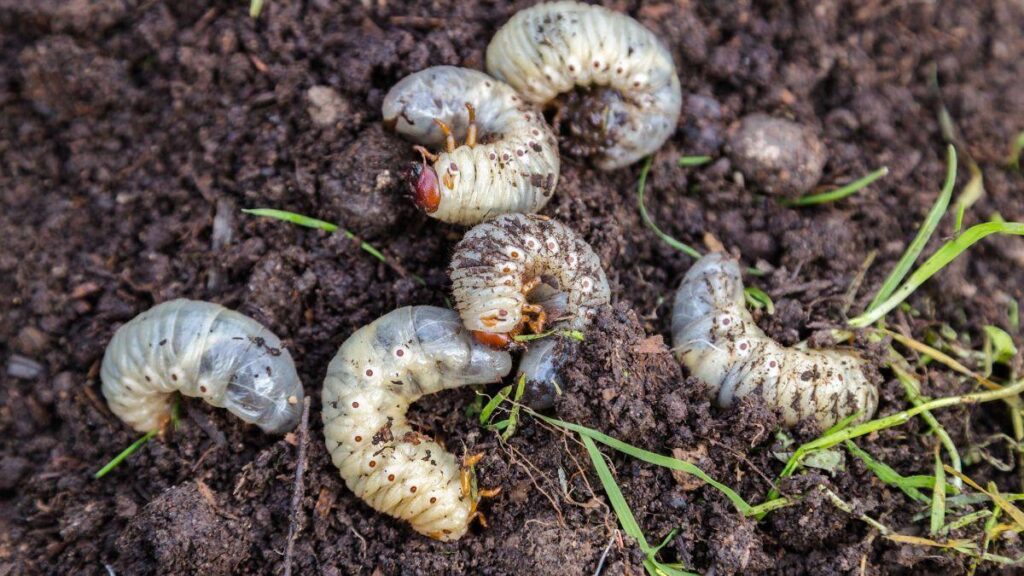
There is no need to be concerned if you only have a few of these pests, as they are a natural part of the lawn ecosystem. However, if you have found a large number of grubs in your yard, you need to get rid of them as quickly as possible to prevent harm to your grass.
Grubs are most susceptible to control strategies when they are immature or haven’t hatched from the eggs. For most people, this means applying a treatment before the lawn grubs hatch. However, there are also curative treatments available as well that kill the grubs at any life stage.
Skunks, raccoons, birds, moles, and other animals that eat grubs can also cause damage to your lawn by tearing it apart in search of grubs. However, ensure the problem is grubs before applying any treatment to your lawn, as these critters also dig and consume earthworms.
They might destroy the entire lawn if you do nothing to treat a grub infestation. However, you won’t have to put up with these pesky lawn pests. Many natural and chemical remedies are available to get rid of lawn grubs for good.
Keep reading to find out!
What Are Grubs?
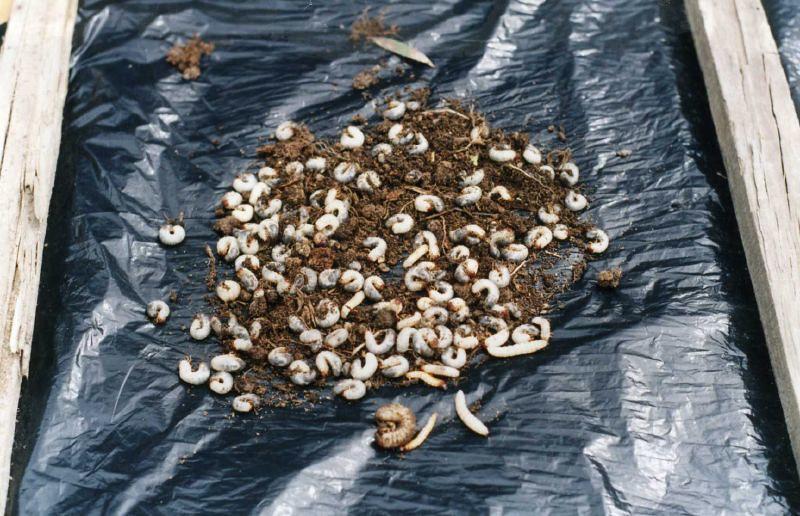
Lawn grubs are the wriggly, worm-like larvae of many beetle species, such as June Bugs and Japanese Beetles that hatch in the spring and summer. They can grow up to an inch long, are grayish or white with brown heads, and often curl into a C shape when disturbed.
In case you do not find and eliminate lawn grubs in time, they will eventually transform into pupae and then into full-grown beetles. Later on, the beetles will begin eating the grass and the other foliage in and around your yard, inflicting even more harm to your lawn.
How Do Grubs Damage Your Lawn?
Lawn grubs are not really harmful in small numbers, but if large populations are left unchecked, they can wreak havoc on your lawn. All grasses can handle grub feeding to some extent, but healthier grass can tolerate more. Nevertheless, turf eaten by grubs gradually thins and becomes patchy with bare spots that will grow larger over time.
Grub infestations are often accompanied by animals such as birds, raccoons, and moles digging up your lawn to find and feed on these juicy beetle larvae. This is not only harmful to your grass’s health but also ruins your lawn’s aesthetics.
How To Tell If You Have Grubs In Your Yard?
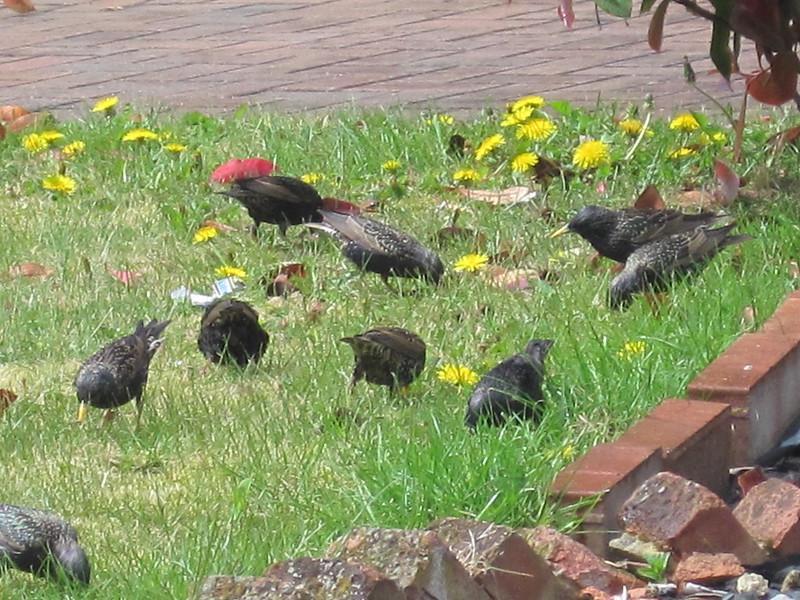
The most straightforward method for determining whether or not you have a grub problem is to search for irregular brown spots spread throughout the lawn. The grass will also be easy to rip in these spots and devoid of roots. However, there are many other ways to check a grub infestation, which are described below.
Signs Of Grub Damage
A Spongy Turf
Grubs cause damage to the roots of turfgrass, which makes the grass easier to pull out and roll up like a carpet. To determine whether or not this is the case, you can perform a tug test on your grass and see if it pulls too easily.
Increased Animal Activity
Grubs are a favorite food of skunks, raccoons, and other digging animals, which means they will dig through your lawn to find some. Unfortunately, this damage can be just as difficult and expensive to fix as the harm caused by the grubs themselves.
Patchy Turf
Since grubs feed on grass roots, over time, this could result in grass death, leading to patchy turf with many bare spots. As the infestation progresses, these bare patches grow larger in size and engulf the entire yard.
Yellowing Grass
As the grubs feed on grass roots, the ability of grass plants to pick up essential nutrients and water decreases. And when the grass is not absorbing enough nutrients and water, its bright green color fades away and eventually turns yellow.
Grass Develops Symptoms Of Drought
If despite frequently watering your yard, it still appears parched from drought, the culprit might well be grubs. And if grubs are, in fact, the problem, the grass won’t look lively no matter how much you water since the roots are damaged.
Presence Of Too Many Grubs
As stated above, a few grubs are fine but finding too many grubs in a yard is a reason for concern. For instance, 2 to 3 grubs per square foot of the turf is normal but finding more than ten grubs means you need to treat your lawn.
Grub damage can often be difficult to precisely identify since it resembles other types of grass damage, like drought stress. However, keeping an eye out for the signs and testing your soil for the presence of grubs can help you stop the grub damage in its tracks.
How To Test Your Lawn For Grubs?
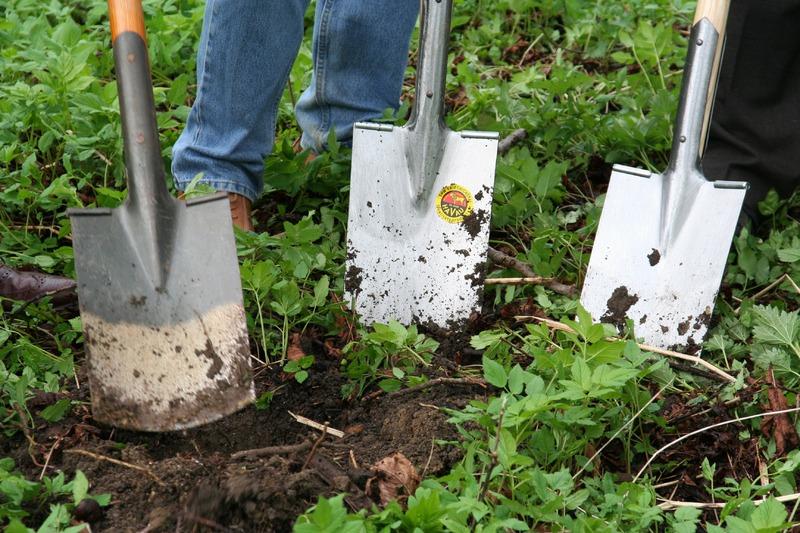
If you suspect your grass is plagued with white grubs, you should do a thorough check. However, remember that finding one or two grubs in the soil does not warrant an insect treatment and is perfectly normal.
Nonetheless, here is how you can test your lawn soil for the presence of grubs:
- Conduct a soil survey in August or September – the peak activity time for grubs.
- Cut one square foot section of your turf nearly 2 to 4 inches deep in many locations.
- Closely check the thatch, soil, and underside of the turf for the presence of grubs.
Following this, if you see more than ten grubs per square foot, it is time to treat your lawn!
How To Get Rid Of Grubs Naturally!
If you have grubs in your yard, you are undoubtedly curious about how to get rid of them in a natural way without resorting to using harmful chemicals. Fortunately, you have many choices, and we recommend the following:
Introduce Nematodes
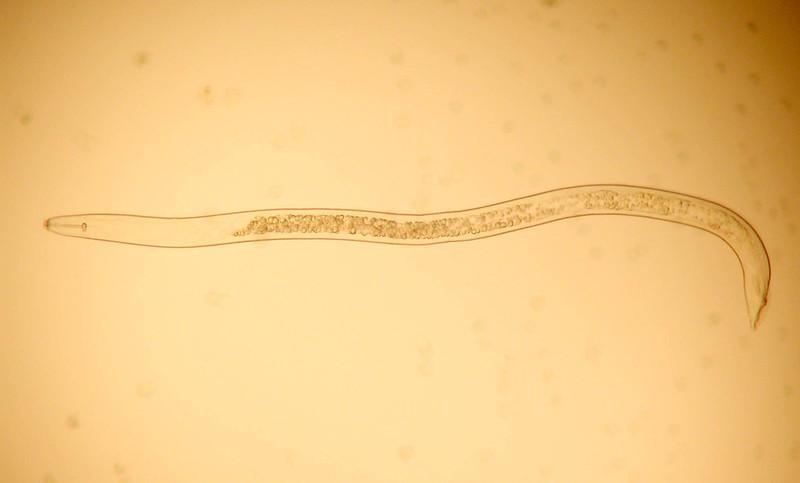
Nematodes are a natural and quick way to eliminate grubs in your grass. Beneficial nematodes are tiny roundworms that move through the damp soil beneath your lawn and penetrate the grass grubs. Here they discharge harmful pathogens that infect the grubs and kill them. This method can rid your lawn of grubs in a few days.
Here is how to do it correctly:
- Pick a species of nematodes that attacks grub worms.
- Spray the nematodes on your lawn or garden by mixing them in distilled water.
- Keep your lawn moist in the coming days for the best results.
It is best to spray the lawn with nematodes in the evening as too much heat, and light can kill them. Also, ensure that soil temperatures are above 60° F before spraying your lawn with nematodes. This is a long-term and effective solution. However, nematodes are very sensitive to environmental elements and chemical pesticides.
RELATED: The Best Grub Killers (Liquid, Granular + Organic) | A Complete Buyer’s Guide
Introduce Grub Predators

Another natural way of removing lawn grubs is to introduce their natural predators. Lawn or white grubs have plenty of natural predators, and while some, such as moles and raccoons, can damage your lawn, some, such as birds, will not.
If you decide to use birds, start by making your yard as inviting as possible for the winged visitors. Install birdhouses, feeders, and birdbaths around your yard. This will draw beneficial bird species and assist you in controlling the grub population of your yard.
However, ensure to keep your vegetable & flower beds safe from these always-hungry birds.
Limit Moisture
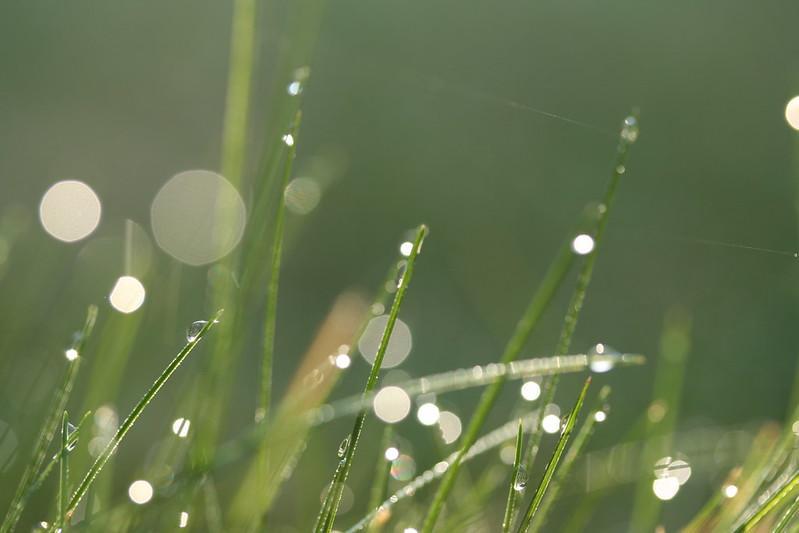
Grubs can only live and thrive successfully if they have access to sufficient moisture. That is why one of the simplest and most effective methods for reducing their population in a yard is to engineer an artificial drought.
To do this, stop irrigating your yard for a few weeks in July if your grass can survive to lay dormant and then revive once you begin watering your yard.
This will cause the grub population to reduce as the eggs will dry, and immature larvae will die due to the lack of moisture.
However, it is essential to keep in mind that the grass will also die if it goes too long without being watered, and this method will only work if the grass in your yard isn’t getting any water from other sources such as rain.
Introduce Milky Spore Disease
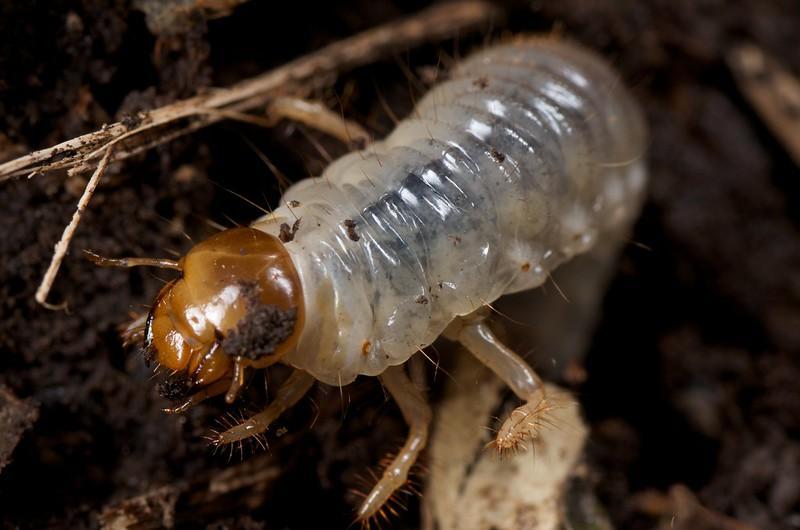
Milky spore disease is another natural, eco-friendly method for controlling white grubs. You can easily buy milky spore at a local garden store and apply it using an affordable dispenser. For best results, you will need to apply milky spores 2 to 3 times a year. Following treatment, milky spores act as an effective biological control for up to 15 years.
However, keep in mind that milky spores are very sensitive to environmental variables, including soil structure, pH, temperature, moisture, and soil type. So, you will need to be careful with their use. Also, milky spores during colder seasons take longer to develop.
The treatment, however, is very effective against grub worms; the more grub worms there are in your yard, the faster the disease spreads.
Use Neem Oil

Neem oil has been shown to be quite helpful in preventing grub worm infestations in lawns and gardens due to its extraordinary insecticidal effects. This natural insecticide prevents grubs from feeding, laying eggs, and maturing into adults, which breaks the grubs’ life cycle and contributes to their control.
To start, mix equal parts neem oil and water, then use a hose-end sprayer to apply the mixture to areas of the lawn plagued with grubs. In addition, spray a generous amount of the solution over the regions of your yard that have developed patches of dead grass to ensure you reach the larvae.
Use Azadirachtin
Azadirachtin is a component in neem oil. Although many people are under the impression that neem oil and Azadirachtin are the same, the reality is that neem oil only has a trace amount of this chemical. Nevertheless, many consumers typically purchase concentrated Azadirachtin to apply on their lawns.
One study found that an application of Azadirachtin to Kentucky bluegrass resulted in the death of Japanese beetles at a rate that was five times higher than what was proposed by the manufacturer of the product label.
Use Borax
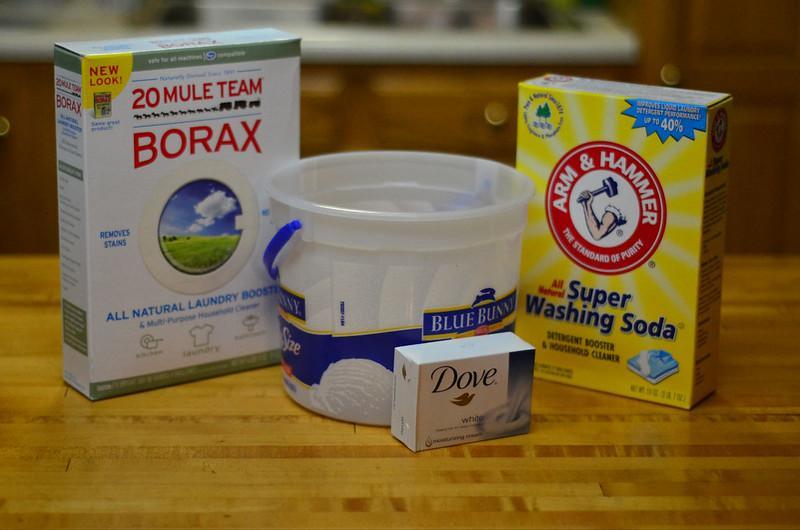
Borax is an element frequently found in household cleaning products and can also be used to kill grubs and other insects. However, it is essential to know that borax contains boron, a compound that can accumulate in the soil and, in high enough proportions, harm your grass. Keeping this in mind, you should only make limited use of this strategy, if at all.
However, if you choose to use borax for killing grubs in your yard, start by filling a spray bottle with warm water and then add one tablespoon of borax powder. Next, spread the solution around generously in areas where you have observed grub activity.
How To Kill Grubs Immediately?

You’re in luck if you’re seeking a quick solution to eliminate grubs. Carbaryl and trichlorfon are the principal compounds utilized for immediate grub control. They are commercially available as rub preventers and grub killers.
These chemical control methods can be used on populations of lawn grubs that are too large to be killed by natural methods. To learn more about controlling grub populations using chemical treatments, refer to this comprehensive guide here.
RELATED: What Is The Best Time To Apply Grub Control? A Comprehensive Guide
How Do Pest Control Experts Get Rid Of Lawn Grubs?
Many lawn care companies offer grub control plans that work in a more or less similar manner. First, a lawn care professional will visit your home and begin by inspecting the lawn for signs of lawn grubs and adult beetle activity.
Next, just before the beginning of the hatching season, insect control will be applied. The product gets absorbed by the soil and will remain in the root system to eliminate any grubs that hatch after applying the treatment.
Many lawn care providers also offer customized lawn care plans along with extra services that may be purchased, allowing you to tailor your treatment plan to your specific needs.
Frequently Asked Questions (FAQs)
What is the best time to treat grubs?
It is best to treat grubs in late summer or early fall when the young, smaller grubs are most vulnerable to control methods. There is also typically a small window for control available in the early spring before the grubs get too large and pupate. However, it can be challenging to time appropriately. For more information, read the article here.
What is the best product to get rid of grubs?
Carbaryl and trichlorfon are two compounds that are considered curative remedies for immediate grub control. They are transient chemicals that are lethal to all grub life stages. So, if large populations of grubs are discovered in the fall or the spring before early May, these two pesticides are the way to go!
Will laundry detergent kill grubs?
Dish soap and laundry detergent can also be used to eliminate grubs: mix water and laundry detergent. Use only as much as you need for the area you intend to pour it on. This mixture will kill the lawn grubs while causing no harm to your lawn.
Sources For Further Reading
Identification of Grubs in Lawns – University of Maryland Extension Service
Managing white grubs in turfgrass – Purdue University Extension Service
How to choose and when to apply grub control products – Michigan State University Extension Service







